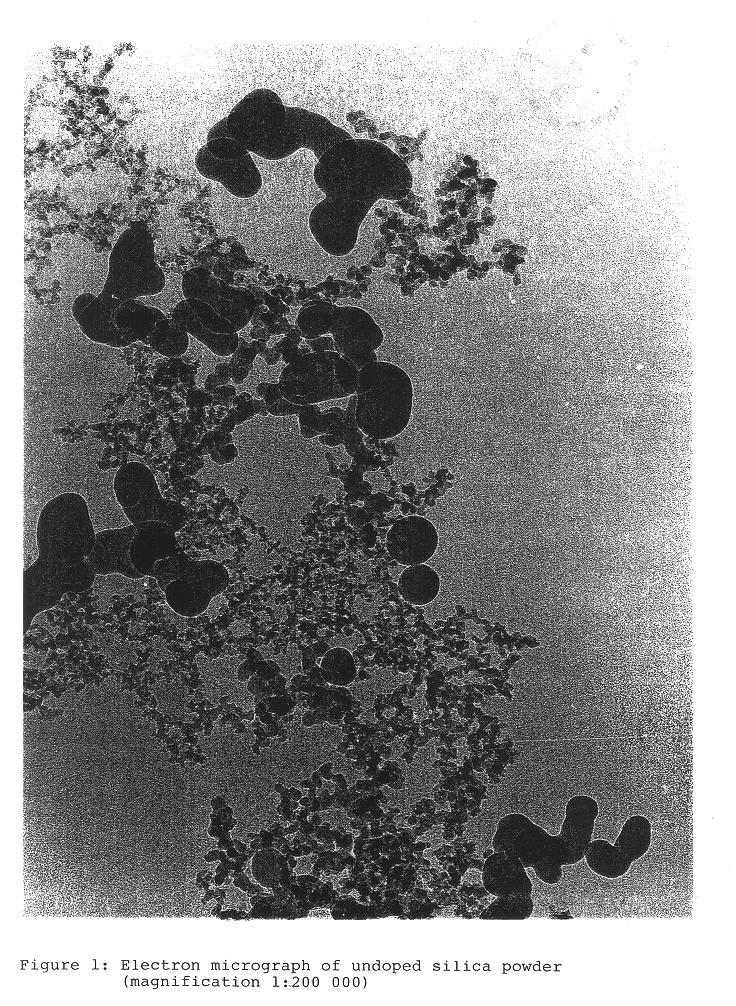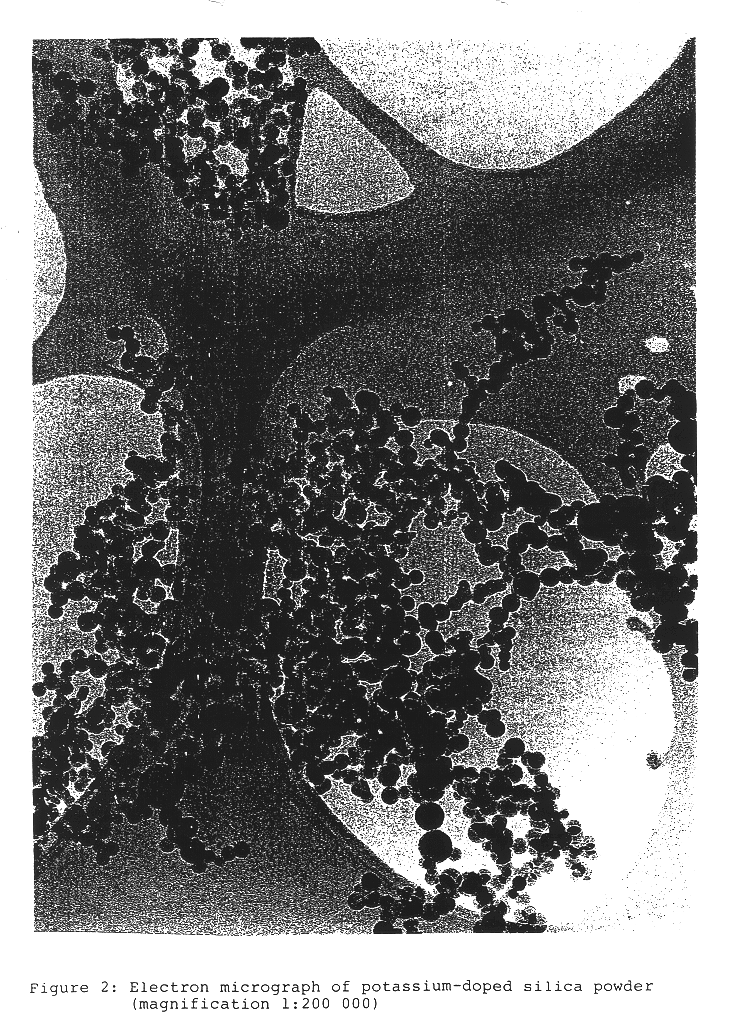Aqueous dispersion, a process for the preparation and the use thereof
a technology of aqueous dispersions and dispersions, which is applied in the field of preparation of aqueous dispersions, can solve the problems of sodium silicate, difficult dispersion of aggregates and agglomerates, and the amount of impurities introduced by the starting material,
- Summary
- Abstract
- Description
- Claims
- Application Information
AI Technical Summary
Benefits of technology
Problems solved by technology
Method used
Image
Examples
Embodiment Construction
Methods of Analysis
The particle size distribution d.sub.n / d.sub.a, of the primary particles in the solid was determined by counting the particles from the electron micrographs.
The average secondary particle size in the dispersion was determined with the Zetasizer 3000 Hsa from Malvern.
The surface of the powders used was determined by the method of S. Brunauer, P. H. Emmet and I. Teller, J. Am. Chemical Society, volume 60, page 309 (1938) incorporated herein by reference, and is generally known as the BET surface.
The viscosity of the dispersions produced was determined with a rotational rheometer from Physica Model MCR 300 and the CC 27 cup. The viscosity value was determined at a shear rate of 500 1 / sec. This shear rate lies in a range in which the viscosity is practically independent of the shear stress.
The sediment formation was assessed by a visual assessment in a 1000 ml wide-mouth polyethylene bottle after a standing time of one week. Any sediment present may readily be detect...
PUM
| Property | Measurement | Unit |
|---|---|---|
| particle diameter | aaaaa | aaaaa |
| particle size | aaaaa | aaaaa |
| particle diameters | aaaaa | aaaaa |
Abstract
Description
Claims
Application Information
 Login to View More
Login to View More - R&D
- Intellectual Property
- Life Sciences
- Materials
- Tech Scout
- Unparalleled Data Quality
- Higher Quality Content
- 60% Fewer Hallucinations
Browse by: Latest US Patents, China's latest patents, Technical Efficacy Thesaurus, Application Domain, Technology Topic, Popular Technical Reports.
© 2025 PatSnap. All rights reserved.Legal|Privacy policy|Modern Slavery Act Transparency Statement|Sitemap|About US| Contact US: help@patsnap.com


